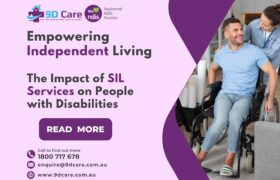- Be Your Personal Best
Warning: foreach() argument must be of type array|object, string given in /home/u637612890/domains/9dcare.com.au/public_html/wp-content/themes/9dcare-theme/inc/custom-functions.php on line 503
MYTHS ABOUT DISABILITY
Have you ever wondered why some people think that disabilities automatically mean someone is unable to lead a full and happy life? Or maybe you’ve heard the idea that people with disabilities are brave and inspiring just for living their lives? These are just a couple of the many myths that surround disability. Unfortunately, these misconceptions can have real-world consequences, leading to discrimination and exclusion. In this post, we’re going to take a closer look at some of the most common myths about disability and explain why they’re wrong. So, sit back, relax, and let’s bust some myths!
- Myth: All disabilities can be seen
Did you know that more than 4.4 million people in Australia live with some form of disability? That’s a staggering 1 in 5 people! And while many people assume that disabilities are always visible, the reality is that there are many different types of disabilities, some of which are not immediately apparent. For example, conditions like schizophrenia, depression, ADHD, and autism can be difficult to detect just by looking at someone. But that doesn’t mean they’re any less real or significant. In fact, these hidden disabilities can be particularly challenging because they may not be recognised or understood by others.
- Myth: Most people with disabilities use wheelchairs
It is not true; in fact, according to AND data, one in six people (17.1%) use a mobility aid, and only 4.4% of those with disabilities in Australia use a wheelchair. Most of the time, only people with specific physical disabilities require a wheelchair. - Myth: People with disabilities can only perform simple jobs.
It’s important to remember that people with disabilities are not defined by their disability alone. They are individuals with unique talents, passions, and strengths, just like anyone else. In fact, many people with disabilities are already thriving in a wide range of jobs and careers, from healthcare and education to tech and the arts. One reason for this is that people with disabilities often have a strong sense of self-awareness and a deep understanding of their own abilities. This allows them to pursue careers that align with their strengths and interests, leading to greater job satisfaction and success. - Myth: Cerebral palsy only occurs at birth
While it’s true that cerebral palsy often occurs during pregnancy or birth, it’s important to remember that this disability can develop at any point in a person’s life. In some cases, cerebral palsy may be caused by factors like infection, head injury, or complications during surgery. For others, the condition may be the result of a genetic or neurological disorder. Regardless of how it develops, living with cerebral palsy can present unique challenges and require adaptations in daily life. But it’s also important to remember that people with cerebral palsy are just as capable of leading fulfilling lives as anyone else. - Myth: Blind people have extra senses
It’s important to remember that people who experience blindness are just like anyone else; they don’t have any additional “special sense” that makes them fundamentally different. However, because they lack visual cues, they may rely more heavily on their other senses, such as touch, sound, and smell. For instance, a person with vision loss might notice more subtleties in the sounds around them, such as the rustle of leaves or the hum of a computer fan. They might also be able to sense when someone is nearby based on the sound of their footsteps or the movement of the air. And because they don’t have the sun’s heat as a cue, they might be more aware of changes in temperature that signal someone’s presence. These are just a few examples of how people with blindness adapt and develop new ways of interacting with the world around them.
Are you struggling with figuring out how to use your NDIS plan? We understand how overwhelming and complicated it can.
The heart of our mission lies in the experiences and invaluable insights provided by NDIS participants. Their candid feedback has.
Supported Independent Living (SIL) services play a crucial role in helping people with disabilities live more independently and confidently. These.
Any condition that makes it more difficult for a person to engage in specific activities or enjoy equal access within.
Therapy can be a game-changer in helping you achieve your goals—whether it’s moving more freely, improving your communication skills, or.
At 9D Care believes in providing unparalleled personal care through their comprehensive and innovative services. And so today, we have.





